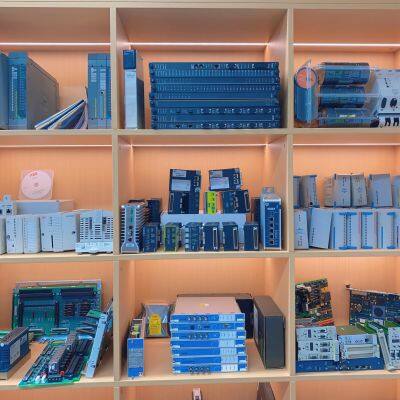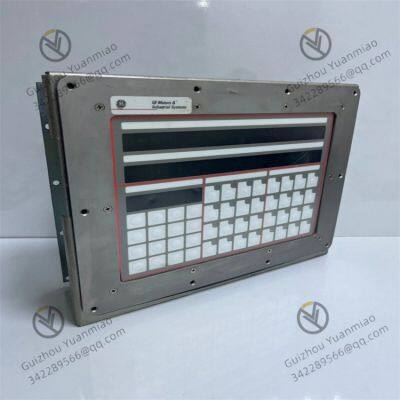Product Description
GE DS2020UCOCN1G1A Mark V Turbine Control System Series Module

GE DS2020UCOCN1G1A Module of Mark V Turbine Control System Series
GE DS2020UCOCN1G1A is a key module in the Mark V turbine control system, mainly undertaking communication and control interface functions, and playing an important role in the control and monitoring of large rotating machinery such as gas turbines and steam turbines. The following is a detailed introduction from the working principle, functional characteristics, main functions and application fields:
I. Working Principle
The Mark V system is a distributed control system designed by GE for turbines (gas turbines, steam turbines, etc.), which realizes real-time monitoring, control and protection of the turbine's operating status through the collaboration of multiple modules.
As a communication and control interface module, the core working logic of DS2020UCOCN1G1A is as follows:
Data Acquisition and Interaction: It connects with sensors, actuators and other control modules (such as processor modules, I/O modules) in the system through internal buses (such as the dedicated high-speed bus of the Mark V system), and collects key parameters of the turbine in real time (such as speed, temperature, pressure, vibration, fuel flow, etc.).
Protocol Conversion and Communication: It supports a variety of industrial communication protocols (such as Modbus, TCP/IP, etc.), converts the collected real-time data into a format recognizable by external systems, realizes communication with upper computers (such as SCADA systems, HMI human-machine interfaces) or other control networks, and receives external control instructions and transmits them to the execution module.
Logic Control Assistance: Cooperating with the main processor module of the system, it executes part of the control logic (such as signal transmission for start-stop control and load regulation), ensures that the turbine works stably according to the set operating curve (such as start-up sequence and shutdown procedure), and participates in the transmission of fault diagnosis and protection signals.

II. Functional Characteristics
High-Speed Data Communication Capability
It supports the high-speed data bus inside the Mark V system, ensuring real-time data interaction with other modules (such as DS200 series I/O modules and processor modules) with a response time of milliseconds, meeting the high dynamic control requirements of the turbine.
It is equipped with external communication interfaces (such as Ethernet, RS485), which can seamlessly connect with SCADA, DCS and other systems to realize remote monitoring and data upload.
Interface Expansion and Compatibility
It provides multiple digital/analog interfaces (the specific number depends on the model), which can be connected to sensors, solenoid valves, relays and other equipment, expanding the control and monitoring range of the system.
It is compatible with the software and hardware architecture of the Mark V system, supports modular configuration, and facilitates module replacement during system upgrade or maintenance.
Redundancy and Reliability Design
Some models may support redundant communication paths (such as dual-bus design) to avoid communication interruption caused by single-point faults and ensure the continuity of turbine control.
It adopts industrial-grade hardware, supports a wide temperature working environment (such as -40℃~70℃), has anti-electromagnetic interference (EMI) capability, and adapts to the strong electromagnetic environment of turbine operation.
Fault Diagnosis and Self-Monitoring
It has a built-in self-monitoring function, which can monitor the working status of the module itself (such as power supply, communication link) in real time. If a fault occurs (such as communication interruption, interface abnormality), it will trigger an alarm signal and upload it to the system, facilitating quick location of the problem.

III. Main Functions
Connection Node of the System "Nerve Center": As a "bridge" between the inside and outside of the Mark V system, it realizes efficient data transmission between sensors, actuators, processors and upper computers, ensuring the real-time performance of control instructions and monitoring data.
Assistance in Execution of Control Logic: It cooperates with the main processor to complete core processes such as start-stop, load regulation and speed control of the turbine, transmits key control signals (such as fuel valve opening instructions, guide vane adjustment signals), and ensures that the turbine operates according to the set parameters.
Remote Monitoring and Operation and Maintenance Support: Through the external communication interface, the turbine operation data (such as real-time status, historical trends, fault records) is uploaded to the monitoring center, which is convenient for engineers to remotely analyze the operation status, formulate maintenance plans, and receive remote control instructions (such as remote start/stop) at the same time.
Signal Transmission for Fault Protection: When the turbine is abnormal (such as over-temperature, over-speed, excessive vibration), it quickly transmits the protection signal to the execution module (such as emergency stop solenoid valve) to trigger protection actions (such as cutting off fuel supply, emergency stop) to avoid equipment damage.

IV. Application Fields
As a core module of the Mark V system, DS2020UCOCN1G1A is mainly used in industrial scenarios with turbines as the core equipment, including:
Power Industry
Gas Turbine Power Plants: It is used for start-up control, load regulation, operation monitoring and protection of gas turbines, and cooperates with steam turbines to realize coordinated control of combined cycle power generation systems.
Steam Turbine Units: It monitors parameters such as the speed of the steam turbine, steam pressure/temperature, and shafting vibration to ensure stable and efficient power generation.
Oil and Gas Industry
Pipeline Compression Stations: It controls the gas turbines that drive the compressors of gas transmission pipelines, adjusts the output power according to the pipeline pressure requirements, and ensures the continuity of natural gas transmission.
Offshore Platforms: It is used for the control of gas turbines on the platform, providing power for drilling equipment and power generation systems, and adapting to the marine high-humidity and salt-fog environment.
Industrial Drive Field
Large Chemical and Metallurgical Plants: It controls the turbines that drive key equipment such as blowers and pumps to ensure stable energy supply in the production process (such as the blast furnace blower system in iron and steel plants).
Marine Power Systems
Gas Turbine Propulsion Systems of Large Ships: It controls the main engine speed and power output, and cooperates with the ship automation system to realize dynamic adjustment of the navigation status.
Summary
GE DS2020UCOCN1G1A module is a key component to realize "data interaction and control connection" in the Mark V turbine control system. Through efficient communication, reliable interfaces and redundant design, it ensures the safe and stable operation of turbines in complex industrial environments, and widely serves the power, energy, industrial drive and other fields.


GE DS2020FECNRP020A Communication and Control Interface Module
BENTLY 330703-000-070-10-02-05 Extension Cable
GE DS200TCPAG1AJD Turbine Control Processor Board
WOODWARD 5466-318 Kernel Power Supply Module
BENTLY 330180-91-00 Eddy Current Proximity Sensor Preamplifier
VIBRO-METER VM600 RPS6U 200-582-600-013 Power Supply
GE Hydran S2 Gas Sensor Module
VIBRO-METER VM600 CPUM 200-595-067-114 Central Processing Unit
Vibro-meter 200-510-076-114 200-510-111-034 VM600 MPC4 Module
VIBRO-METER VM600 IOC16T 200-565-000-013 200-565-101-013
GE IC693CPU374-JY Core Processor Module
VIBRO-METER VM600 RLC16 200-570-000-111 200-570-101-015
 yezi
Hi there! Welcome to my shop. Let me know if you have any questions.
yezi
Hi there! Welcome to my shop. Let me know if you have any questions.






